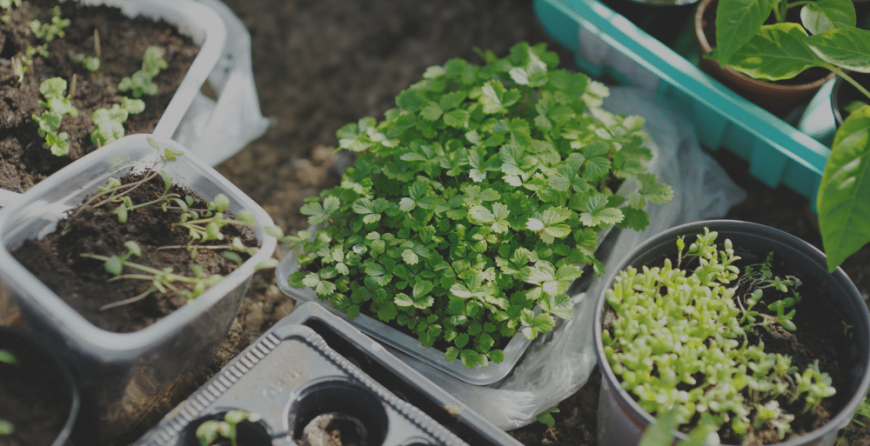 With the limited organic gardening spaces that come along with modern townhouses, it can sometimes be necessary to grow herbs indoors. Herbs can survive varying temperatures including harsh winter conditions. All they need is enough light and care. Below are a few indoor growing techniques to keep your herbs healthy and reproductive.
With the limited organic gardening spaces that come along with modern townhouses, it can sometimes be necessary to grow herbs indoors. Herbs can survive varying temperatures including harsh winter conditions. All they need is enough light and care. Below are a few indoor growing techniques to keep your herbs healthy and reproductive.
Herb growing techniques
Rooting a cut
Some common indoor grown herbs like sage, rosemary, thyme and oregano are transitioned to grow indoors by cutting a 4-inch section from the outdoor plant. Strip off the bottom leaves and stick the stem into a moist vermiculite or perlite soilless mixture. Cover the cutting with clear plastic or glass to retain the right moisture levels.
Transitioning to indoor environment
Just before winter arrives, move your potted outdoor herbs towards their new winter home. However, do not move them indoors immediately. Start by placing them in a cool but bright area like your garage, enclosed porch or entry way for some weeks. After acclimating, move them indoors to an area that receives adequate light. Note that, south facing windows offer most brightness followed by west or east facing windows. Protect the indoor herbs from too much heat and dryness. Water them adequately and maintain day temperatures of between 65 to 70 degrees. The night temperatures should drop to about 50 degrees to imitate the outdoor growth conditions. Most herbs will still thrive with occasional temperature drops to 40 degrees.
Water, temperature, and light
Just like most indoor plants, herbs require regular watering but not too much watering. The roots should not remain wet for long. Reduce your watering to when the container’s top feels dry. To boost drainage, add vermiculite or sand to the potting soil. Learn to balance water, temperature and light. For instance, a pot facing south requires more water as compared to a pot facing west or east. If the light outside is low, the indoor temperatures should be kept low as well.
Prevention of pest attacks
Your indoor organic gardening space is limited, as such, you need to choose your soil carefully. Ensure that you choose uninfected and healthy soil that is fine. Mix one part of garden soil with one part of organic compost and sand, perlite or vermiculite. Avoid using garden soil that has been infected with pests and diseases before. If possible, remove as much of the gardening soil as possible without damaging the plant roots.
If your herbs still get infected by pests, keep them safe by giving them regular baths, offering the right lighting and temperature combination. Indoor herbs that weaken due to poor watering routines and heat are more susceptible to pest attacks.
Growing herbs indoors is not as hard as most people think. Herbs require growth conditions similar to ones they get outdoors. So, research as per the herbs to wish to grow to determine how to care for your indoor plants. Proper lighting and occasional watering are musts if you wish to harvest healthy and nutritious herbs. In the organic gardening spirit, remember to use only organic fertilizer or compost.


